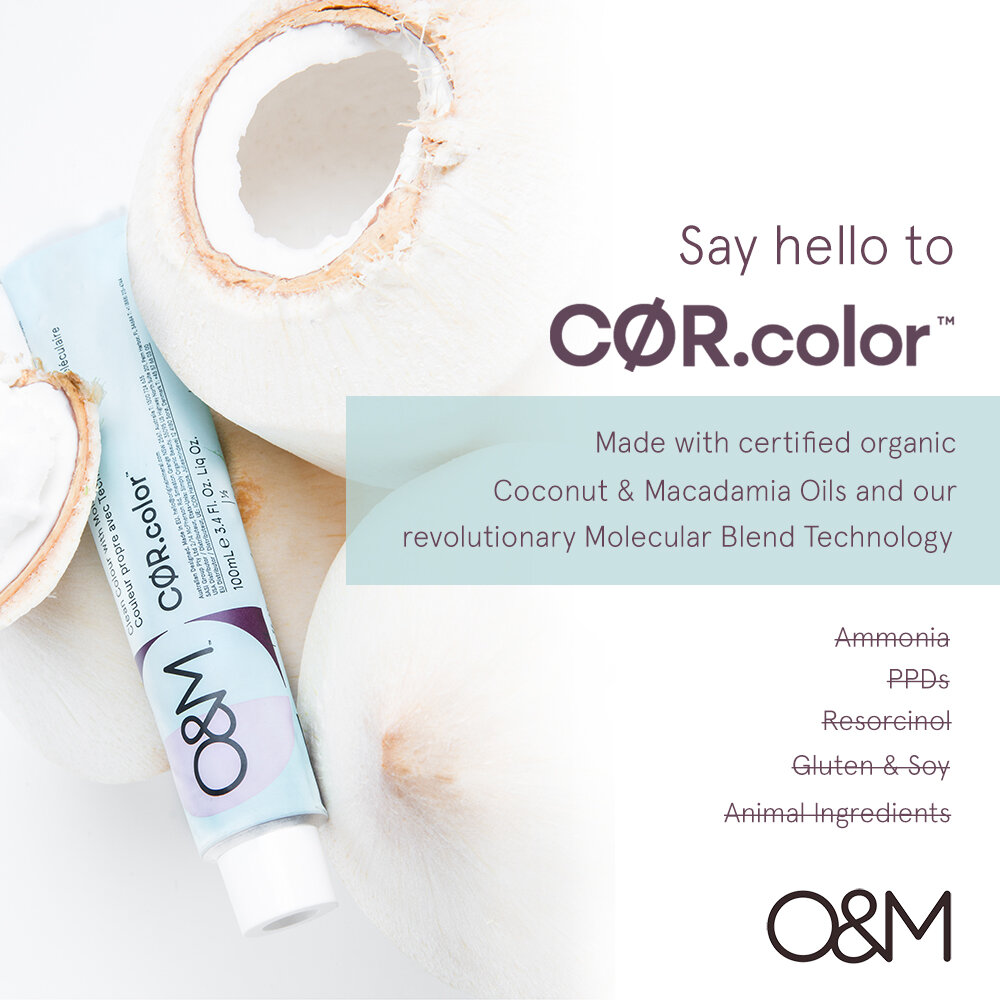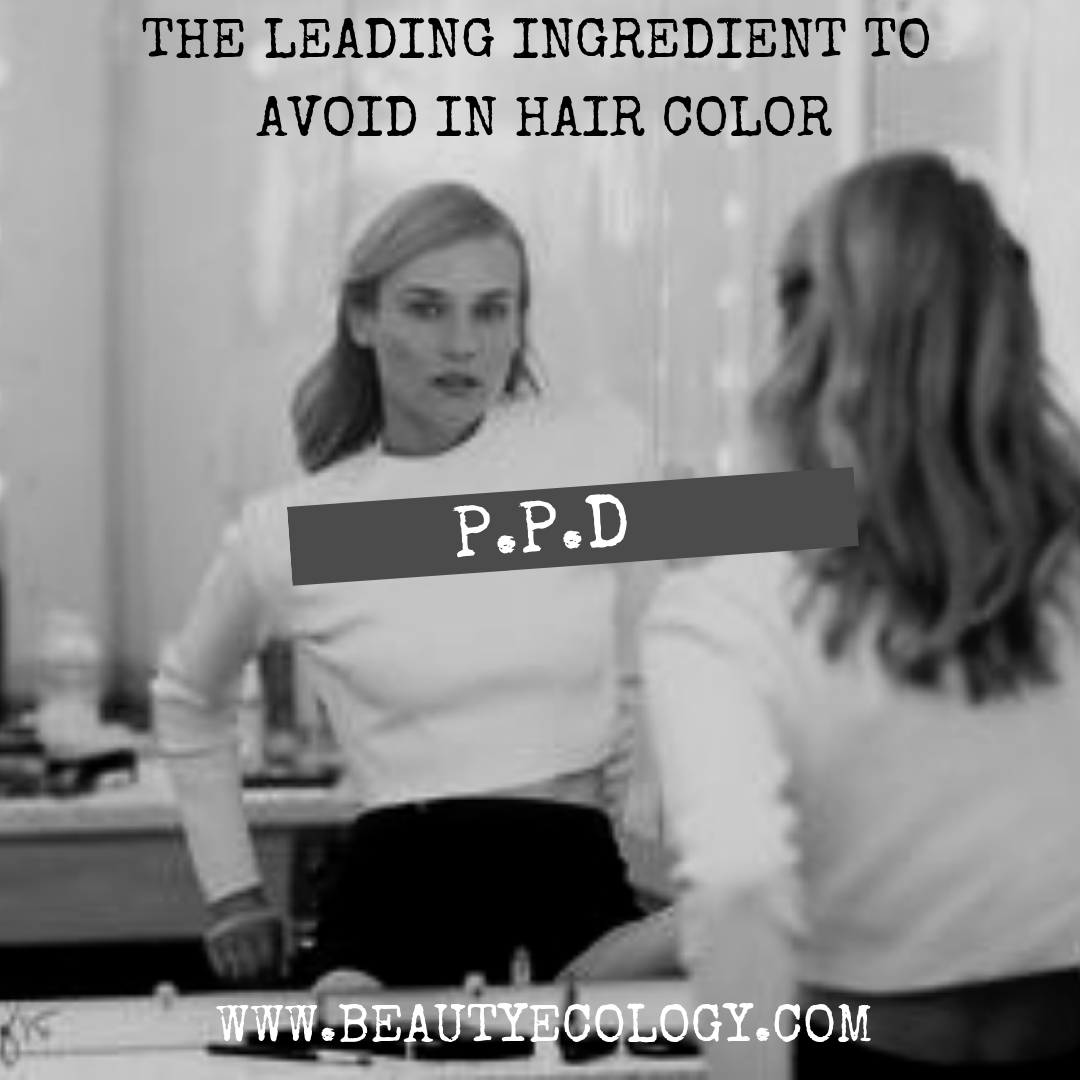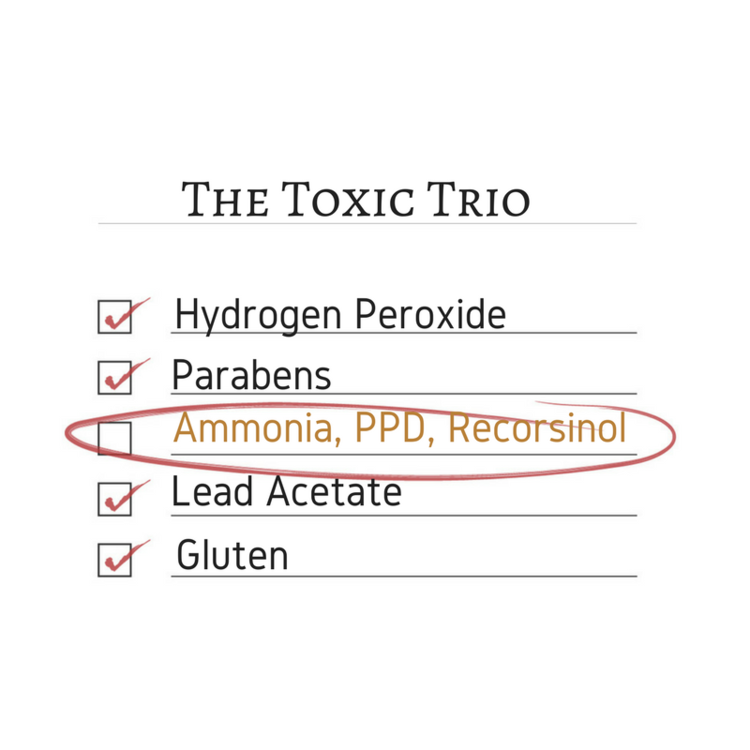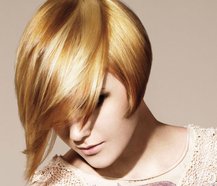Tempt you though it may, box color puts both you and your hair health at risk.
There is a reason why I aligned with 100% safe and clean beauty practices within my organic salon over 15 years ago - and it has to do with my client’s health and calling out the greenwashing.
FACT: 1 in every 5 Hair Stylists will suffer a health issue directly related to their job.
Studies have shown Hair Stylists have increased risks of bladder and breast cancers, as well as higher reported cases of respiratory and skin health issues, so it's no secret that Hairdressing is known as one of the most toxic and dangerous career paths.
Compound exposure to toxic chemicals in the salon, like ammonia, formaldehyde, synthetic fragrance (phthalates, benzene, etc), hair color pigments (PPD), and PEGs have adverse effects on the health of skin, hair and body.
Armed with this knowledge, I’m here to share the appropriate steps to reduce the exposure to harmful chemicals for both Hair Stylists and our beloved clients.
As referenced, toxicity wise, hair color studies have proven that chemicals with conventional color lines increase teh risk of bladder cancer, infertility, non-Hodgkins lymphoma and leukemia, allergens, sensitivities, and hair loss.
Now, let’s break down just a few of the differences between box dyes versus professional color.
Box Color = Unpredictable Results
Let’s face it: 9 times out of 10 your hair color will not look like what you see on the box.
Professional color: swells into the hair cuticle (Beauty Ecology uses enzymes versus damaging peroxide) to deposit pure and nontoxic pre-oxidized dyes that are smaller and large color molecules to trap the color better and reducing fading.
Box dyes: Simply stain the proteins on the hair, changing their chemical make up. Sure it may seem shiny the first day, but wait for that color to rinse out with each shampoo leaving a busted cuticle with practically no protein left blowing in the wind.
Developer Chosen Based on Integrity of Your Hair: This is KEY. How would you know what developer to use? The developer determines the levels of deposit and lift. Colorists choose your developer level based on the integrity and strength of YOUR hair.
Forcing Damage: Box dyes only use the strongest hydrogen peroxide making sure it can break through the thickest hair cuticle. This also causes scalp itch, inflammation and long term scalp damage resulting in hair loss.
Box dyes: are like picking 'one size fits all'.’ So when you pick up a Ashy or chocolate brown box to cover your blonde hair, don't be surprised when you get out of the shower with green or red hair. Why? Most advanced colorists know that you have to have all the right “fillers” to fulfill the end results desired.
Professional color: is predictable. When you're ready to go lighter, your stylist will be able to give you a realistic end result because we know the chemical make up of your hair and because we know how many times color has been applied from roots to ends.
Beauty Ecology (Kassandra here) determines the number of foils you will need to get you to your desired blonde results - in a healthy and safe way.
All Over Color Creates Cuticle Degradation. Repetitive application, especially an all-over color- it is refilling the cuticle, breaking down more protein bonds and adding another layer of dye onto your hair. The scalps cuticle porosity is different than the ends, and when you head back to the salon to add highlights because it’s turned dull, off-tone or damaged - the highlights will most likely be bright at the scalp and orange on the bottom.
One Size Does Not Fit All
So, let’s think about this logically.
Box color is formulated so everyone and anyone can use it.
Again, your hair type, condition or color are not even remotely the same to other women. Box dyes are formulated with maximum amounts of pigment and ammonia, so it’s able to work on most people.
Itchy Scalp + Hair Loss + Allergies - This unnecessary overload of ingredients wreak havoc on hair health and increase your likelihood of allergic reactions.
And no, an ammonia-free box color doesn’t mean healthier hair.
Customization is key to achieving your healthiest, happiest color.
Dimension? Forget it.
Box color contains just one formula - and a streamlined pigment.
And applying it to your whole head will give you just that—one boring, flat color. Unless your have some pre-existing color or highlights, then you may end up with orange roots, red mids and pink highlights!
Is your head spinning, yet?
If so, hopefully, it’s in the direction to Beauty Ecology Organic Salon and not the box color aisle at Target.
Ombre in a box? Blonde? Don't you do it!
Let’s talk about high lighting.
Box dye will come with a 30 to 40 high life peroxide. Depending on what your starting shade is, the reality is you’ll likely need to pre-lighten multiple times before achieving the bright blonde you want to achieve.
We’re talking bleach for a day brings damage for a year, so please don’t do lightening services at home!
Lightening at home is by far the most damaging, risky thing you could do to your hair.
And no, a highlighting cap will not save you from cheetah spots or hair that is breaking off by the time you wash it.
What’s your back up plan?
That $10 Box Color Won’t Feel That Affordable After a $300 Color Correction.
I Got Ya!
WHEN MINUS MAKES A POSITIVE
Women are now chemically conscious about the amounts of harsh chemicals used in everyday cosmetics and haircare products. Pregnancy, illness and skin sensitivity has also led many consumers to seek out products with a lower chemical compound.
Beauty Ecology was one of the first hair salons to offer professional-grade ammonia, resorcinol and PPD free permanent hair color making it gentle on the hair and scalp.
CLEAN COLOR TECHNOLOGY
As a technical innovator, our formulating chemists look to remove harsh chemicals wherever possible while including natural extracts and active minerals that deliver real benefits.
By reducing their chemical dependence our breakthrough formulas put less stress on hair whilst ultimately improving the hair’s condition.
To bring this thread to a close, I hope you can now see the nuances and level of thought and care stylists consider for YOU behind the chair.
Here are the top 3 ingredients to avoid - at all costs. Ask your stylist about your options, and buyer beware of what the silent substitutes are when shopping the plethora of GREEN WASHING “ammonia free” box dyes at the store.
WHAT ARE THESE CHEMICALS AND HOW CAN THEY BE HARMFUL?
PPD
Paraphenylenediamine is a chemical substance that is widely and traditionally used as a permanent hair dye. People who are highly allergic to PPD have not been able to dye their hair with traditional hair color.
Known as a possible carcinogen
Allergies to PPD are common and reactions include dermatitis, reddening and swelling of the scalp and face.
In some severe allergy cases the eyelids may completely close and can result in contact urticaria and anaphylaxis.
RESORCINOL
Used as a coloring agent and is also commonly found in topical acne treatments.
Suspected to be an endocrine toxicity hazard
Suspected to be a human immune system toxicant
Suspected to be toxic to wildlife and the environment
AMMONIA
A chemical that swells the hair cuticle so that color can be absorbed all the way through the hair.
Unpleasant odor
Many people become allergic due to exposure and suffer from itchy scalps and watery/red eyes while getting their hair colored.
My number one priority is to deliver professional results to my valued clients time after time. All Evoq Home Care Professional Grade Suppor products are developed with the critical input of practicing hairdressers and the need of prolonging the client’s color at home.
Contact me if you have any questions about your color or ingredients to watch for.
My PASSION and heart is pouring out to you - women can LOOK and FEEL beautiful with the help of a professional to get you the best results possible - and with your safety in mind.
xo Kassandra















